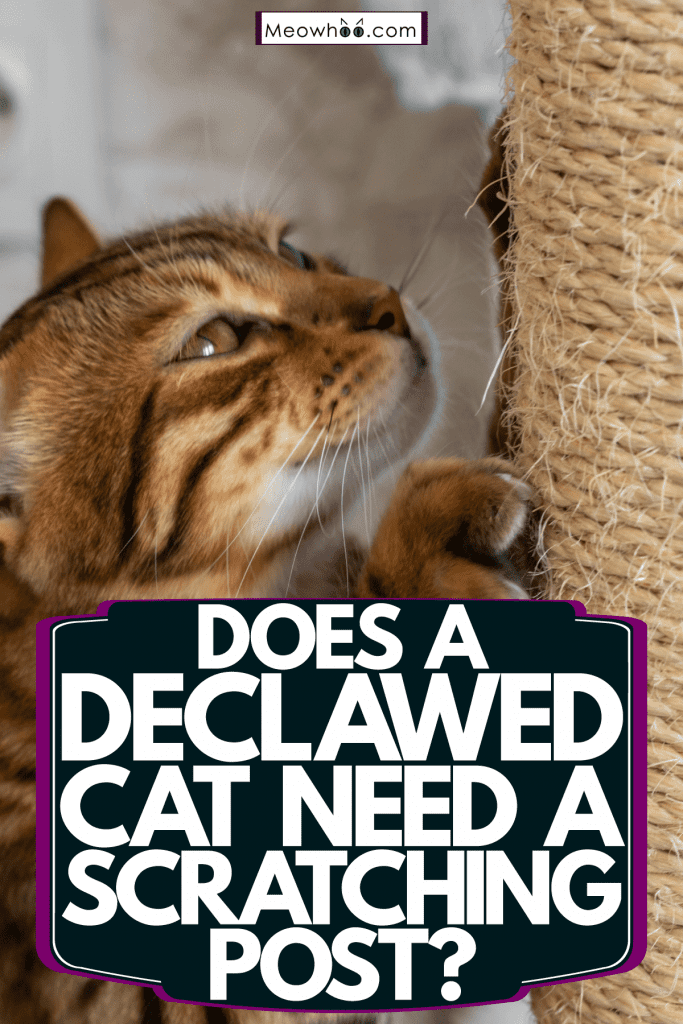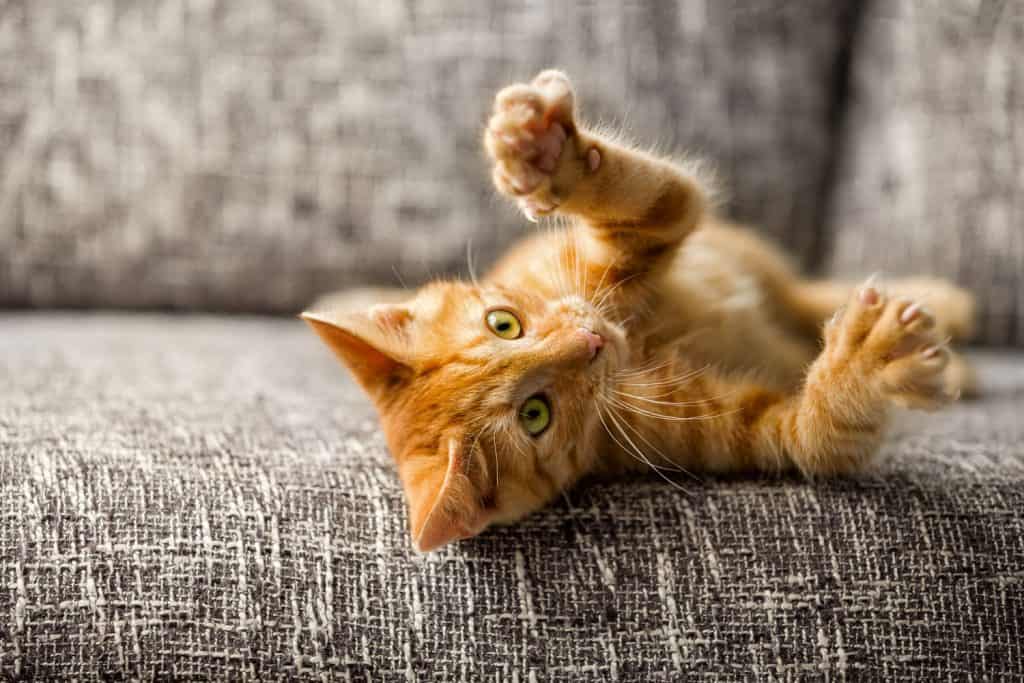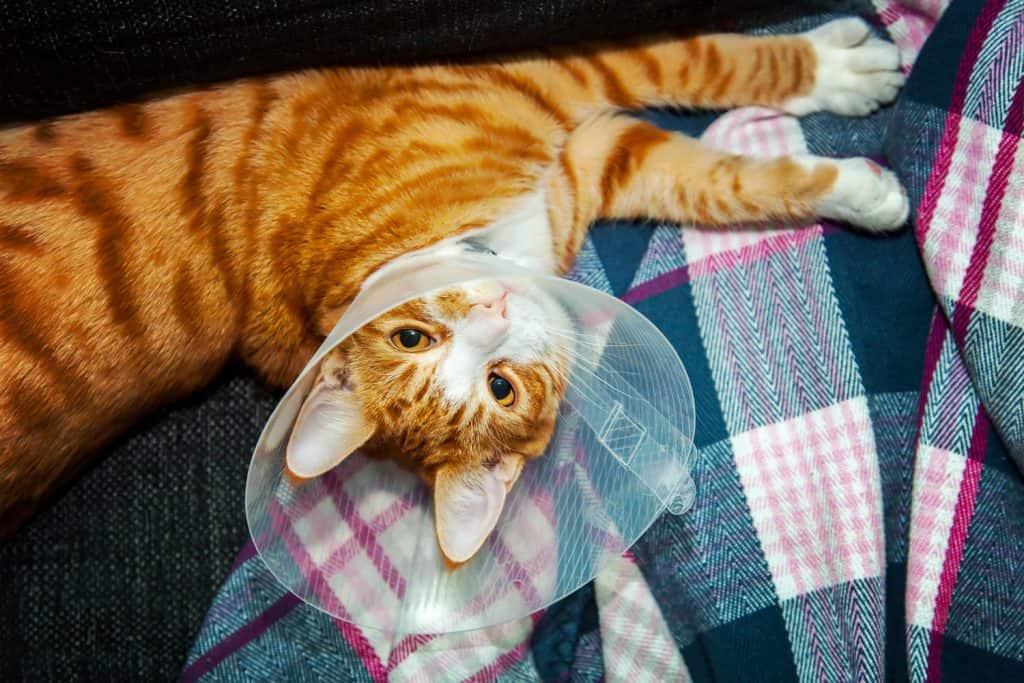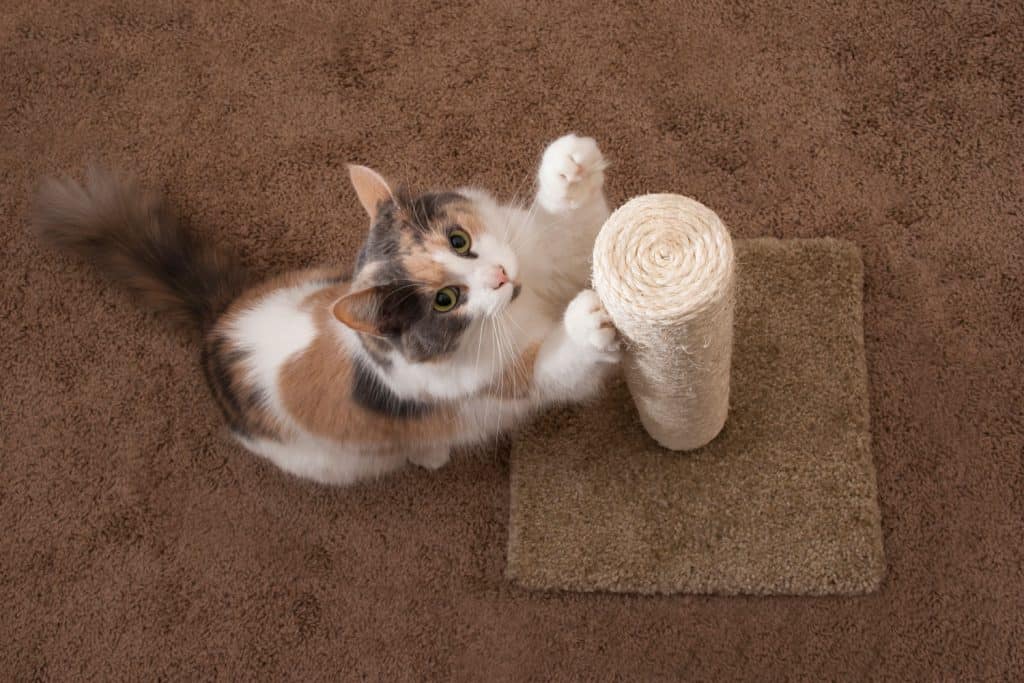Declawing is discouraged as it causes pain and can lead to cat behavior problems. But if you happen to adopt a cat who has already been declawed, you need to assemble a safe and fun environment for them after the surgery so that they know that life still goes on. In the process, you might wonder if they will still need a scratching post. We've asked the experts, and here's what they have to say.
Declawed cats still need a scratching post. Scratching is a natural cat behavior, and even if their claws have been removed, they will still go through the motions of scratching since it's in their nature to do so.
If you still have some additional questions, don't worry. In this guide, we'll tell you more about what you need to know about declawing and how you can help your furry friend get through it so they can continue living a normal life. We'll also discuss this controversial issue further and recommend alternatives before you resort to the declawing procedure. Without further ado, let's get into it.

Why Do Declawed Cats Still Scratch?
Scratching is normal behavior among felines. It is part of their instinct. It is an outlet for them to release emotions like excitement or stress.
Cats also scratch to mark their territory. Their paws have scent glands, and as they rub surfaces with them, they are also leaving their distinct smell on these places. Scratching also helps cats scratch.

Given that scratching is natural for cats, declawing them won't take away this instinctive behavior. This is why declawed cats still scratch, and providing them with a good scratching post will help them continue to satisfy this need to scratch.
Are Declawed Cats Always In Pain?
Declawing requires surgery, as it entails amputating the last bone of each toe on a cat's paw. Onyectomy is the official term for this kind of medical procedure. Cats undergoing this surgery are given general anesthesia so they won't feel a thing during the operation.
There are two ways to go about it. The traditional way requires the use of a scalpel or guillotine clipper. After the surgery, the vet closes the wounds with stitches or surgical glue. A bandage is then placed on the cat's paws.
The newer method entails the use of laser technology. With this method, intense light beams are utilized. It heats and vaporizes the tissues on the cat's paws until they are amputated. Experts say that there is less trauma on the toes, less bleeding, and less pain with this procedure.
Cats who underwent declawing are generally in pain for around 10 days or even longer, especially for older felines. They are given medicine to help manage the pain. There may be swelling, bleeding, or infections following the procedure.
However, there have been studies that indicate long-term pain in declawed cats. This is the main reason why animal rights advocates oppose this procedure.
Do Cats Have To Wear A Cone After Being Declawed?
Pets are usually sent home wearing the Elizabethan collar (most commonly called the cone of shame) after an operation. Its main purpose is to prevent cats from chewing or licking the injured part, as doing so might cause infections and more pain.

Since declawing is a surgical procedure, your furball would need to wear this cone as part of their post-operative care. Vets recommend that you keep the E-collar on your pet for 10 to 14 days until their wounds are healed.
It might take some time for a cat to get used to the cone of shame, but they will get used to it after a while. Just make sure that the collar is always clean and free of any debris. The fit should also be comfortable and won't irritate the cat's skin.
Pet parents might need to change their cat's food and water bowls to make it easier for them to eat and drink. Wider dishes are recommended. It would also be best to have these in an elevated position to reduce the strain on the pet.
Since cats cannot groom themselves while wearing an E-collar, pet owners should help them in ensuring that they are always neat and tidy.
It is also not advisable to remove the collar, as it could be hard to put it back around the pet's neck. If this happens, you can bring the pet back to the vet to help you with it. They can also give you more tips on how to manage your pet's post-operative care.
Do Cats Change When You Declaw Them?

Declawing causes changes in cats not just in terms of losing their claws but also in how they behave.
It may cause lameness, back pains, and joint problems. Since their paws hit the ground differently, they cannot stretch their backs as they used to. There are also cases of hemorrhage and nerve damage.
Declawed cats may find it uncomfortable to use their litter box and climb their cat trees. They might find it uncomfortable to walk or climb without their claws.
There can also be changes in their personality. They may also become insecure or fearful because they cannot defend themselves like before. This can also lead them to become more aggressive.
This is why declawing is not really recommended by veterinarians, and it is even banned in other countries.
If the scratching behavior becomes a problem, there are other ways to address the issue such as the regular trimming of their claws, putting soft plastic caps on them, or providing them with scratching posts.
Click here to see these cat nail caps on Amazon.
Can A Declawed Cat Climb A Cat Tree?
There are many changes that happen to a cat after being declawed, especially when it comes to their behavior and personality. But it won't take away a cat's desire to climb up to a higher place to be able to see its territory or the outside world.
Climbing has always been a part of their instinct. They are tree dwellers, and declawing them won't take away that inclination. That's why it is necessary for owners of declawed cats to be able to address this need.
Although you can still use your old cat tree, there are some cat trees out there that will make it easier, safer, and more comfortable for declawed cats to climb. These are some things that pet parents need to consider:
Look For A Wider Cat Tree
This time, it's not about height. A declawed cat might have a harder time climbing vertically. A wider tree will give them more space to play while still being a little up from the ground. It reduces the risk of falling from a high place, so there is less risk of your cat getting injured.
Get A Cat Tree With A Ramp
A ramp makes it easier for cats without claws to go up. This way, they won't have to struggle to make it to the top. It also won't inflict further pain on their paws.
Choose One With A Larger Platform
This will serve as their runway as they prepare to climb or jump. They will have more space to move, and it's also there to catch them when they fall.
Incorporate Cat Caves And Cubbies
These make cat trees more fun, right? Every cat, declawed or not, loves hiding inside their cave or resting on cubbies. They can relax comfortably.
A wider cat tree with a ramp, wider platforms, cat caves, and cubbies will help declawed cats have more fun!
Click here to see this cat tree tower on Amazon.
Final Thoughts
Declawed cats should still have fun and be able to perform things that they naturally do. Setting up a scratching post will help them address their need to scratch while having fun. It is a way to bring back some normalcy in their lives.
For more on scratching posts, check out these articles:
12 Types Of Scratching Posts And Scratchers
Should You Put Catnip On Scratching Post
Some elements on this page may have been created by our team using advanced AI to provide you with top-notch cat inspired ideas. Read more about our AI Content Policy.



Hi, I’m an HSUS volunteer, and here in New Hampshire we are trying to get a law passed to ban cat declawing. Your article covers all the reasons why, which is great, but do you think you could change the first paragraph to be along the lines of “declawing is discouraged… causes the cat pain and can lead to behavioral problems… but if you happen to adopt a cat who has already been declawed…” It’s really important that people understand that declawing is mutilation. Thanks!
Thanks for dropping by, Joan! We’ve made the changes.